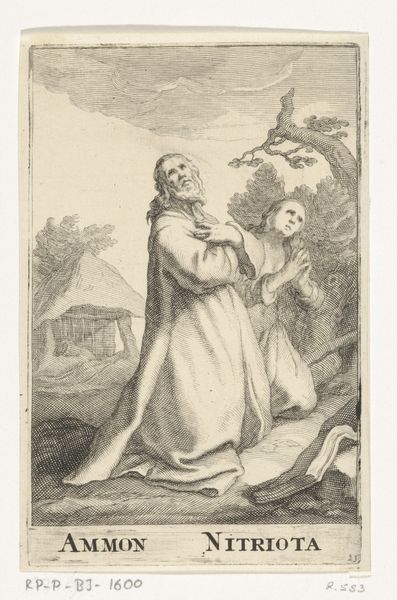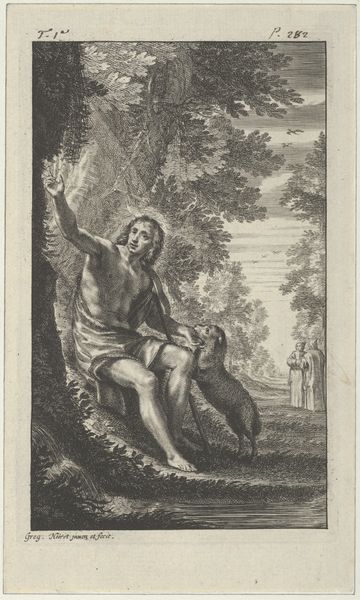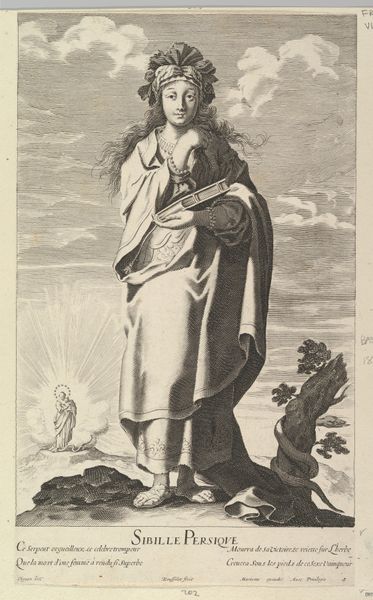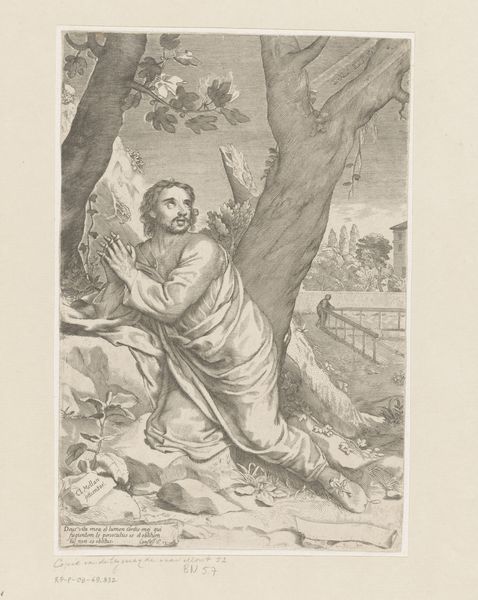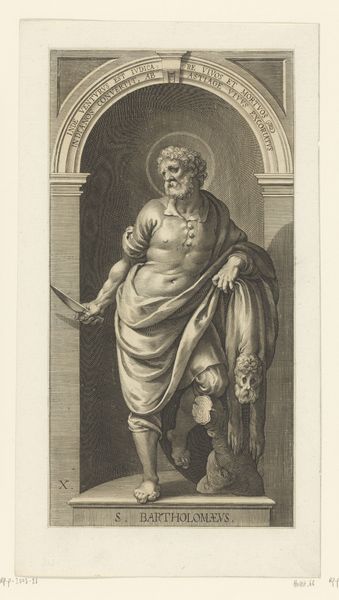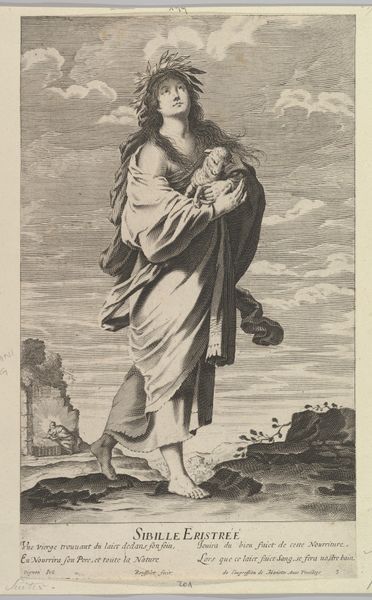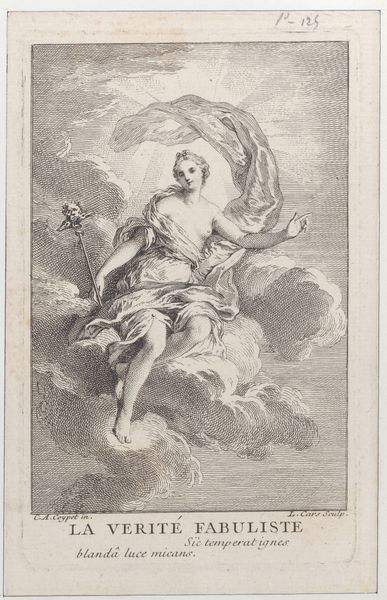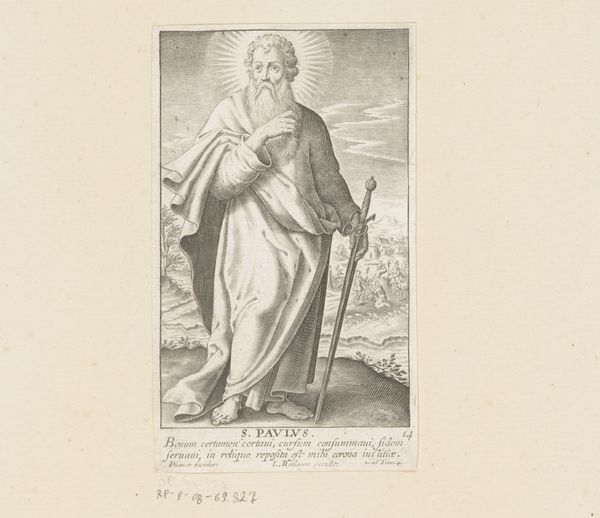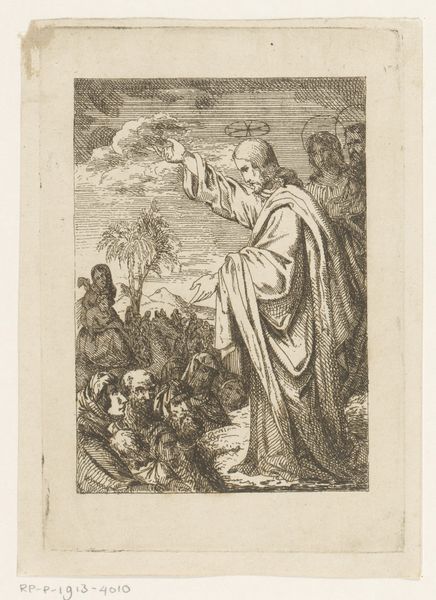
print, engraving
#
narrative-art
#
baroque
# print
#
figuration
#
line
#
history-painting
#
engraving
Dimensions: height 442 mm, width 327 mm
Copyright: Rijks Museum: Open Domain
Curator: This is Francois de Poilly’s "Johannes de Evangelist op Patmos," a print dating from 1657 to 1681, currently held at the Rijksmuseum. Editor: Wow, intense. He’s caught between a thunderstorm brewing above and this, is that an eagle? The whole thing feels both dramatic and, somehow, strangely serene. Curator: Indeed. The eagle is the symbol of John the Evangelist, often depicted during his exile on the island of Patmos where, according to tradition, he wrote the Book of Revelation. It places John within a rich history of religious and artistic interpretation. Editor: He looks positively overwhelmed by it all! The open posture, almost childlike, gazing towards something beyond, whilst the landscape shifts from pastoral to catastrophic... It’s quite a dichotomy, isn’t it? As if, you know, he is straddling the realms between reality and something otherworldly. Curator: De Poilly captures that tension beautifully. This engraving employs the Baroque aesthetic which frequently seeks to stir emotional responses, the sublime. We see that rendered in this moment of revelation and its connection with political turmoil that drove his exile. The themes explored extend far beyond purely religious ideas. Editor: Thinking of the marks he’s about to make with his pen, I bet he’s having a tough time committing anything to paper. This reminds me of my worst bouts of writer’s block. That poor chap is surrounded by inspiration, by divine inspiration. So it’s somewhat comical! Curator: In de Poilly’s time, anxieties regarding religious and political authority were rife, so to look at how this scene uses John to question divine communication with mortal affairs in his writing sheds a great deal on these tensions. Editor: Well, from where I'm standing, and with the world constantly seeming upside down, that questioning continues to ring true, centuries later. An artist conveying anxieties, making it so tangible? That's still pretty neat to behold. Curator: Indeed. This artwork leaves us considering these intersectional concepts, their historical background, and continued presence today. Editor: For me, it's that relatable human emotion in the face of...well, everything. Feeling tiny yet tasked with these gigantic responsibilities. We can see this on the face of this incredible figure, Saint John.
Comments
No comments
Be the first to comment and join the conversation on the ultimate creative platform.



